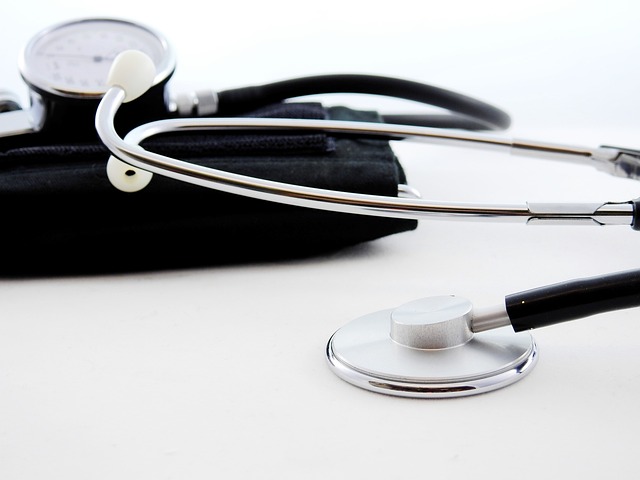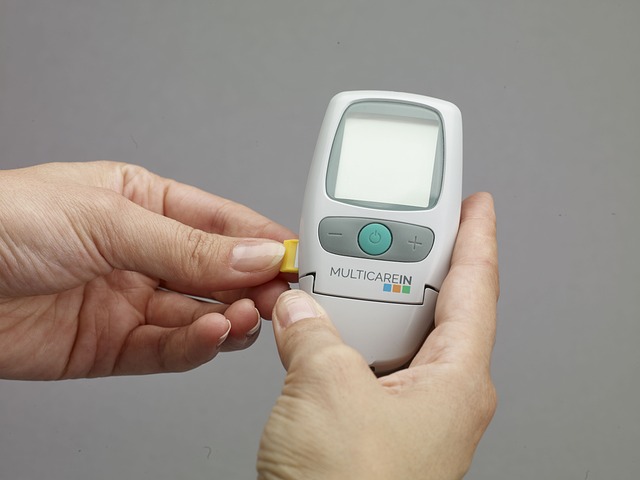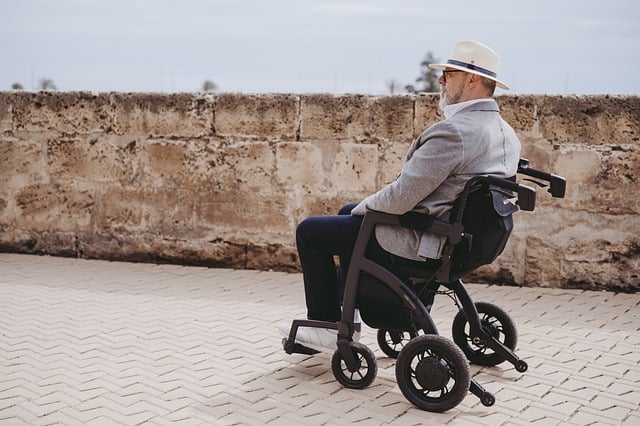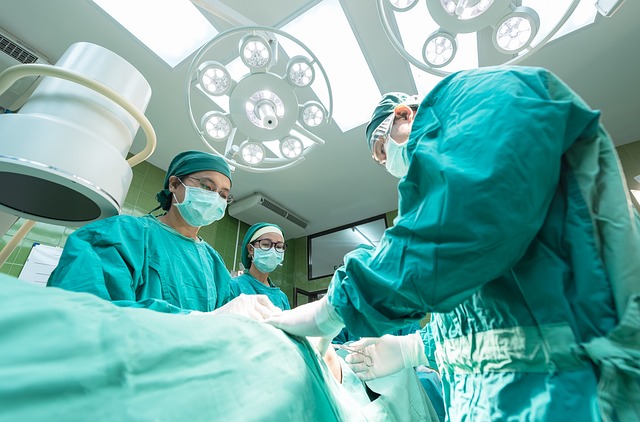Translation services for Medical Device Manuals UK are essential due to stringent regulations that mandate localized content in line with the Medicines and Healthcare products Regulatory Agency (MHRA) standards. These services must ensure translations not only accurately convey information but also align with UK healthcare practices, including cultural nuances and emergency protocols. Given the UK's unique regulatory framework under the Medical Devices Regulation (MDR) 2017/745 and the In Vitro Diagnostic Regulation (IVDR) 2017/746, medical device manufacturers must provide translations of their manuals in English within the UK market. This is to guarantee that users can understand instructions for use, maintenance, and reporting of adverse events safely and effectively. Specialized translation services with expertise in both medical terminology and regulatory knowledge are required to navigate these complexities, ensuring patient safety, compliance with legal requirements, and fostering trust among healthcare providers and patients. The accuracy and precision of translations are paramount to avoid errors that could lead to device misuse, injury, or legal consequences. Therefore, manufacturers must invest in reliable translation services for Medical Device Manuals UK to engage successfully with the market and meet all regulatory demands.
Navigating the complexities of international markets, particularly within the medical device sector, necessitates a keen understanding of local regulations and user preferences. As the UK stands as a distinct market with its own regulatory framework, ensuring that medical device manuals are not only translated but adeptly localized for UK use is paramount. This article delves into the critical aspects of this process, outlining the essential regulatory requirements, championing best practices for translation and localization, and guiding manufacturers to select reliable translation services tailored for the UK context. Embracing these strategies will empower your medical device manuals to meet the high standards required within the UK, thereby safeguarding user comprehension and compliance with regional mandates.
- Understanding the Necessity of Localized Medical Device Manuals in the UK
- Overview of Regulatory Requirements for Medical Device Manuals in the UK Market
- Best Practices for Translating and Localizing Medical Device Manuals for UK Users
- Selecting Reliable Translation Services for Medical Device Manuals in the UK Context
Understanding the Necessity of Localized Medical Device Manuals in the UK

With the UK’s distinct regulatory environment and healthcare system, it is imperative that medical device manuals are tailored to reflect local requirements and standards. The provision of translation services for Medical Device Manuals in the UK is not merely a courtesy but a legal necessity for manufacturers looking to enter or operate within this market. The Medical Devices Regulation (MDR) 2017/745, which came into effect in May 2017, mandates that device manuals are provided in a language that the user understands, ensuring clarity and safety. This regulation underscores the importance of accurate translation and localization to facilitate proper use, maintenance, and reporting of adverse events associated with medical devices. Localized manuals also play a critical role in risk management strategies by providing clear instructions that align with the UK’s healthcare practices and emergency procedures. By investing in high-quality translation services for Medical Device Manuals UK, manufacturers can ensure compliance with local laws, enhance patient safety, and build trust with healthcare providers and consumers alike. The stakes are high, as incorrect or poorly translated information can lead to misuse of devices, potential harm to patients, and legal repercussions for non-compliance with the MDR. Thus, manufacturers must prioritize the availability of well-translated, contextually accurate manuals in English to navigate the UK medical device market effectively.
Overview of Regulatory Requirements for Medical Device Manuals in the UK Market

navigating the intricacies of the UK regulatory landscape is paramount for medical device manufacturers seeking to market their products within the country. The UK’s Medicines and Healthcare products Regulatory Agency (MHRA) oversees the approval and monitoring of medical devices, ensuring they meet stringent safety and performance standards. A key requirement in this process is the provision of comprehensive user manuals that facilitate safe and effective use by healthcare professionals and patients. For devices intended for the UK market, these manuals must be available not only in English but also in any other language used by significant populations within the UK. This necessitates robust translation services for medical device manuals UK-specific, which are tailored to comply with local regulations and linguistic nuances. Manufacturers must ensure that translations are accurate, consistent with the original content, and approved by the MHRA. Furthermore, these manuals must be reviewed and updated regularly to reflect any changes in clinical practice or regulatory guidance, underscoring the importance of a dynamic and responsive approach to manual localization and maintenance. By adhering to these standards, manufacturers can ensure that their medical devices are ready for use in the UK, thereby safeguarding patient safety while also fulfilling legal obligations. It is crucial for companies to engage with experienced translation services for Medical Device Manuals UK to navigate this complex process efficiently and effectively.
Best Practices for Translating and Localizing Medical Device Manuals for UK Users

When translating and localizing medical device manuals for UK users, it is imperative to adhere to stringent quality standards and legal requirements. The translation services for Medical Device Manuals UK must not only accurately convey technical information but also comply with the Medicines and Healthcare products Regulatory Agency (MHRA) guidelines. This ensures that all instructions and safety precautions are correctly interpreted in the context of UK healthcare practices. Localization extends beyond mere linguistic translation; it involves cultural adaptation to meet the preferences, conventions, and norms of UK users. This includes the use of appropriate units of measurement, date and time formats, and any local regulatory markings or symbols that may differ from those used in the device’s original language version.
To facilitate effective communication, it is essential to engage with translation services that possess specialized expertise in both the medical field and the specific domain of the device in question. These services should employ multilingual professionals who are not only fluent in the target language but also well-versed in medical terminology and regulatory expectations. By leveraging advanced translation technologies and incorporating feedback from native UK speakers, these services can deliver translations that are precise, reliable, and compliant with all necessary regulations. This commitment to excellence in translation services for Medical Device Manuals UK is crucial for ensuring user safety, enhancing patient outcomes, and maintaining the integrity of the medical device market within the UK.
Selecting Reliable Translation Services for Medical Device Manuals in the UK Context

When localizing medical device manuals for the UK market, selecting a reliable and accurate translation service is paramount. The translations must be precise to ensure patient safety and regulatory compliance. Medical device manuals contain critical information that users rely on for safe and effective use of the devices. As such, it is essential to choose translation services that specialize in medical content and have a proven track record in the UK context. These services should employ native-speaking translators with expertise in both the source and target languages, as well as a comprehensive understanding of local regulations and standards, such as the Medical Device Regulation (MDR) 2017/745 and the In Vitro Diagnostic Regulation (IVDR) 2017/746. Moreover, they should be familiar with the MHRA’s (Medicines and Healthcare products Regulatory Agency) guidelines and requirements for medical device documentation in the UK. This ensures that all translations not only convey the correct information but also meet the stringent legal and safety standards required within the UK healthcare environment.
In addition to language proficiency, the chosen translation service should utilize advanced translation technology and quality assurance processes. This combination minimizes the risk of errors or misinterpretations in the translated content. Furthermore, they should offer a scalable solution that can accommodate the volume of translation required for comprehensive device manuals, while also maintaining the integrity of the original content. By leveraging such specialized translation services, medical device companies can confidently expand their market reach in the UK, ensuring that users receive accurate and clear instructions, thereby promoting both safety and efficacy of the medical devices available to them.
navigating the intricacies of medical device regulation within the UK is paramount for manufacturers seeking compliance and clear communication with users. This article has elucidated the critical importance of localizing device manuals to meet the specific needs and legal standards of the UK market. By adhering to the outlined regulatory requirements and employing best practices in translation, companies can ensure their manuals are both accurate and user-friendly for British consumers. Selecting a reputable translation service specialized in medical device manuals for the UK context is a strategic investment that safeguards user safety, enhances brand trust, and facilitates market expansion. It is clear that attention to localization details in this sector not only aligns with legal obligations but also reflects a commitment to patient care and customer satisfaction.
